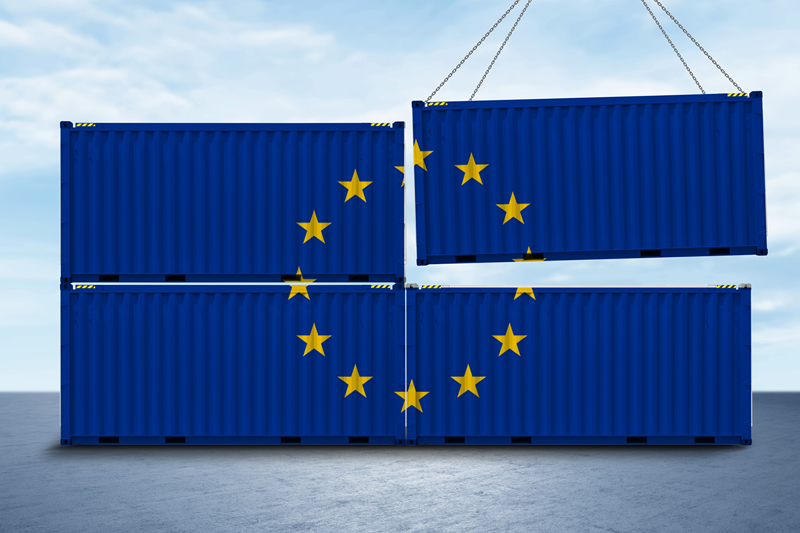The EU Emission Trading System & Shipping In Focus
21
Emission trading schemes (ETS) are increasingly being seen as tools that governments and regulators can employ to combat pollution from international shipping. The central concept behind an ETS is to establish a market mechanism that enforces the "polluter pays" principle. Polluters are required to pay for the environmental and social costs of pollution, including cleanup expenses and potentially research into pollution-reducing technologies. Naturally, raising the cost of pollution provides an incentive to decrease its generation. Protea is a global lead on shipping and marine emissions monitoring systems with a full global support team across the whole of the EU. We are well placed to provide Continuous Emission Monitoring System (CEMS) to the shipping industry with our range of products and solutions.

The interest in extending current domestic emission trading programs to encompass international shipping has been growing. In the European Union (EU), a consensus has been reached on the application of the EU's emission trading system to the shipping industry starting from 2024. Ship owners and charterers need to begin contemplating how they will adhere to these requirements.
At the national level, governments can impose taxes on pollution sources at the point of production or sale, as seen with products like petrol. The intention is for these taxes to offset the expenses associated with managing pollution and encourage reduced consumption. However, the challenge with international shipping is that if only a few governments implement such taxes on bunker fuel, buyers are likely to adjust their strategies to avoid bunkering at the taxed ports. To make a sales tax on bunker fuel effective, major bunkering ports worldwide would need to collaborate and uniformly tax bunker fuel. Given the unlikelihood of such global cooperation in the near future, governments are now considering imposing charges on emissions rather than fuel sales.
Emission trading schemes (ETS) are increasingly being seen as tools that governments and regulators can employ to combat pollution from international shipping. The central concept behind an ETS is to establish a market mechanism that enforces the "polluter pays" principle. Polluters are required to pay for the environmental and social costs of pollution, including cleanup expenses and potentially research into pollution-reducing technologies. Naturally, raising the cost of pollution provides an incentive to decrease its generation.
Consequently, there is a growing interest in expanding existing emission trading schemes to encompass international shipping, including initiatives in the EU, China, and Japan. The core concept of an ETS involves a limited number of emission permits being traded on the market. Emitters must purchase and surrender enough allowances to cover their emissions. The price of these allowances will fluctuate based on supply and demand dynamics, motivating emitters to find cost-effective ways to reduce emissions.
The European Union Emission Trading Scheme, initiated in 2005, operates as a "cap and trade" system. CO2 emitters in specific sectors are required to buy allowances to cover their carbon emissions during designated trading periods. The quantity of allowances available at any given time is fixed, generally decreasing annually to drive emissions reduction within the EU. The implementation of this scheme in the shipping industry has been under deliberation for a while. However, a consensus seems to have emerged among the European Parliament, the Council of Ministers, and the European Commission on key features:
- The system encompasses carbon dioxide, methane, and nitrous oxide emissions. Application to all vessels over 5,000 gross tons operating within EU waters, regardless of their flag.
- Commencement date of January 1, 2024 (moved from January 1, 2023).
- Phased implementation: 40% coverage in 2024, 70% in 2025, and 100% in 2026.
- Inclusion of all intra-EU voyage emissions.
- Coverage of 50% of EU-bound and outbound voyage emissions.
- The "shipping company" (defined as owner, manager, or bareboat charterer) is responsible for surrendering allowances.
- A deadline of April 30 for surrendering allowances for the preceding calendar year (e.g., April 30, 2025, for 2024 emissions).
- Non-compliance can result in penalties and expulsion orders.
Another area of discussion involves determining emissions during voyages into or out of the EU, and the potential for operators to evade full application of the EU ETS. For instance, if a vessel stops at an intermediary port just outside the EU shortly after leaving EU waters, the outbound voyage may be calculated as shorter than one from/to the actual next loading port. Although this issue is anticipated to be addressed in the implemented scheme, it currently requires further consideration.
#protea #emissions #monitoring #cems #ftir #gas #analysers #shipping #marine
Other Articles
Global Underground CO2 Storage Data Offers Hope Amid Rising Emissions
01
IMO Postpones Adoption Of Global Net-Zero Shipping Framework
04
Pioneering Carbon Capture Projects Ready For Construction
03
Methanol & Ammonia Deemed Ready As Zero-Emission Shipping Fuels
01
Carbon Capture Storage Reaching A Turning Point In Decarbonisation
13
CCS To Capture 15% Of Shipboard Carbon Emissions By 2050
29
Global Shipping Industry Struggles To Navigate Net Zero Transition
21
Carbon Capture Surges as Economics Policy & Industry Demand Align
14
GHG Emissions At Ports On The Rise Despite Initiatives
07
Carbon Capture Utilisation & Storage In A Nutshell
30